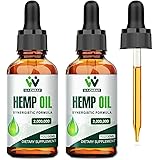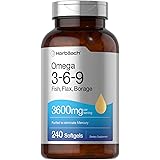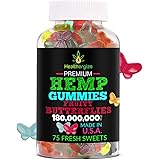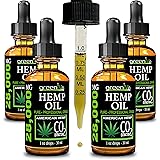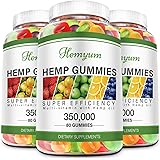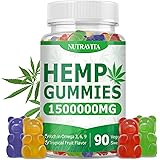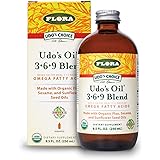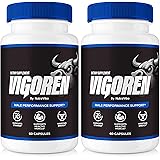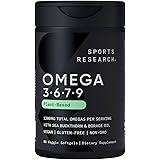With the global CBD market valued at billions of dollars and projected for substantial growth, the interest in CBD products has surged dramatically. However, as succinctly highlighted in the video above, this explosive growth often comes with a significant challenge: widespread confusion regarding product labeling. Estimates suggest that a considerable portion of consumers are unable to distinguish between various hemp-derived products, leading to potential mispurchases and dissatisfaction.
The landscape of hemp-derived offerings can appear bewildering, featuring terms such as CBD, Hemp Extract, Hemp Seed Oil, and even the ambiguous “Hemp Oil.” For individuals seeking specific wellness benefits, navigating these distinctions is not merely an academic exercise; it is crucial for informed decision-making and ensuring product efficacy. This article aims to build upon the clarity provided in the video, delving deeper into each category to empower consumers with the knowledge needed to confidently identify what they are purchasing.
Understanding CBD Products: Cannabidiol at the Core
When a product is explicitly labeled with “CBD,” it is confirmed to contain Cannabidiol, which is one of over 100 distinct cannabinoids identified in the Cannabis Sativa plant. This particular cannabinoid has garnered significant attention in recent years, largely due to a growing body of research suggesting a spectrum of potential therapeutic benefits. For instance, CBD has been widely studied for its anti-inflammatory properties, with some reports indicating a positive impact on conditions characterized by inflammation. Similarly, its potential in mitigating chronic pain, such as that associated with arthritis, has been the subject of numerous investigations.
Moreover, the anxiolytic effects of CBD have been a major point of interest for those seeking natural alternatives for anxiety relief. While the precise mechanisms are still being elucidated, it is believed that CBD interacts with the body’s endocannabinoid system, which plays a pivotal role in regulating mood, pain sensation, and immune response. Despite these promising indications, the industry’s rapid expansion has not been matched by comprehensive federal regulation, creating a dynamic market often described as the “Wild West.”
The Spectrum of CBD: Full, Broad, and Isolate
Although briefly mentioned in the video as a topic for future discussion, the subcategorization of CBD products into Full Spectrum, Broad Spectrum, and Isolate is fundamental to understanding their composition and effects. Each type offers a unique profile of compounds, influencing the overall experience:
- Full Spectrum CBD: This variant is understood to contain all the naturally occurring compounds of the hemp plant, including other cannabinoids (like trace amounts of THC, typically below the legal limit of 0.3%), terpenes, and flavonoids. The synergy between these compounds is often referred to as the “entourage effect,” theorized to enhance CBD’s therapeutic potential.
- Broad Spectrum CBD: In contrast, Broad Spectrum products contain multiple cannabinoids, terpenes, and flavonoids, much like Full Spectrum, but with one critical distinction: the THC content has been meticulously removed or is undetectable. This option is frequently chosen by individuals who wish to benefit from the entourage effect without any exposure to THC.
- CBD Isolate: This represents the purest form of CBD, having undergone extensive processing to remove all other plant compounds, leaving behind 99% pure cannabidiol. Isolate products are often preferred by those who are sensitive to other cannabinoids or who specifically want to avoid THC entirely.
The selection among these categories often depends on individual preferences, desired effects, and sensitivity to various plant compounds.
Deciphering “Hemp Extract”: A Legal Bridge to CBD
Navigating product labels can be further complicated by the term “Hemp Extract.” As the video elucidates, if a product lists “Hemp Extract” among its ingredients, it almost certainly contains CBD. This nomenclature is frequently employed by businesses for a variety of reasons, often rooted in legal or marketing strategies. During the nascent stages of the CBD industry, and even presently, some companies opted for “Hemp Extract” to circumvent regulatory ambiguities or to position their products in a way that was perceived as less controversial.
Historically, the term “hemp extract” may have gained traction as early as the 1970s, though its widespread adoption in product labeling is a more recent phenomenon driven by the burgeoning market. Consequently, when encountering a product labeled as “Hemp Extract,” it can be safely assumed that the intention is to provide a CBD-containing formulation. However, the lack of standardized language necessitates a deeper look at the ingredients and, ideally, third-party verification to confirm the actual cannabinoid content.
Distinguishing Hemp Seed Oil: Nutritional Value Without CBD
A common point of confusion arises with “Hemp Seed Oil,” which, despite its name, does not contain CBD. This crucial distinction is often misunderstood by consumers. Cannabidiol (CBD) is primarily extracted from the stalks, stems, and flowers of the Cannabis Sativa plant. Conversely, Hemp Seed Oil is meticulously pressed from the seeds of the plant. These seeds, while incredibly nutritious, are devoid of cannabinoids like CBD or THC.
However, the absence of CBD does not diminish the considerable health benefits offered by hemp seed oil. It is celebrated for its rich nutritional profile, which includes a high concentration of antioxidants, essential amino acids, and a particularly favorable balance of omega fatty acids. Specifically, hemp seed oil boasts an optimal 3:1 ratio of omega-6 to omega-3 fatty acids, along with gamma-linolenic acid (GLA), all of which are vital for human health. It is frequently utilized as a culinary oil, similar to olive oil, and is incorporated into various food products, supplements, and even skincare formulations for its emollient properties and antioxidant content.
Navigating Hemp Oil Confusion: Clarity Through Inquiry
Perhaps the most ambiguous term on product labels is “Hemp Oil.” This designation presents a challenge because it can refer to one of two vastly different products: either hemp seed oil (which contains no CBD) or hemp extract (which does contain CBD). This lack of specificity is precisely why consumers are often advised to approach such products with caution.
In an unregulated market, vague labeling can unfortunately be exploited by unscrupulous sellers. Research conducted in 2017, published in the Journal of the American Medical Association (JAMA), revealed that a significant percentage of CBD products sold online were inaccurately labeled, with content often differing from what was advertised. Therefore, when faced with a product simply labeled “Hemp Oil,” the most prudent course of action involves direct communication with the manufacturer. Inquiries should be made to clarify whether the product contains CBD and, if so, to request a Certificate of Analysis (COA) from a third-party laboratory.
The Critical Importance of Third-Party Testing and COAs
Given the unregulated nature of the CBD market, the emphasis on third-party testing cannot be overstated. A Certificate of Analysis (COA) is a document issued by an accredited laboratory that details the chemical composition of a product. For CBD and hemp-derived products, a COA should provide comprehensive information, including:
- Cannabinoid Profile: This confirms the exact amounts of CBD, THC, and other cannabinoids present, ensuring the product’s advertised potency and legal compliance (i.e., less than 0.3% THC).
- Purity Testing: This section verifies the absence of harmful contaminants such as heavy metals (e.g., lead, mercury), pesticides, residual solvents (from the extraction process), and microbial impurities (e.g., mold, bacteria).
Manufacturers who genuinely prioritize consumer safety and product quality will readily provide a COA for each batch of their products. A transparent company will usually have these reports easily accessible on their website or upon direct request. The willingness to provide such documentation serves as a critical indicator of a reputable brand in an industry still grappling with standardization.
Informed Choices in a Developing Market
As the market for CBD products continues to evolve, the responsibility of discernment largely falls to the consumer. The distinctions between CBD, Hemp Extract, Hemp Seed Oil, and Hemp Oil are fundamental, yet frequently obscured by marketing practices and a lack of consistent regulatory oversight. By understanding these differences and prioritizing products with transparent labeling and verifiable third-party testing, consumers can navigate the current landscape with greater confidence. This empowers individuals not only to make choices aligned with their wellness goals but also to contribute to the demand for greater accountability and quality within the industry itself. The path to a more straightforward and regulated market is paved by informed consumers.


